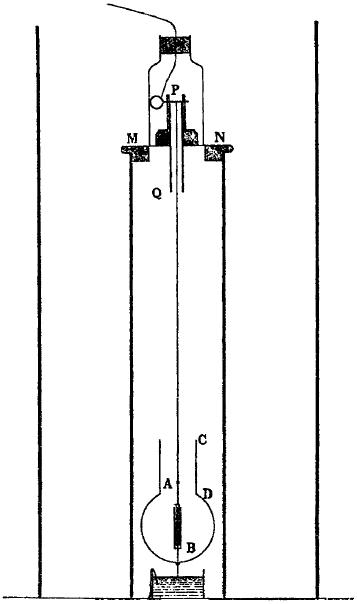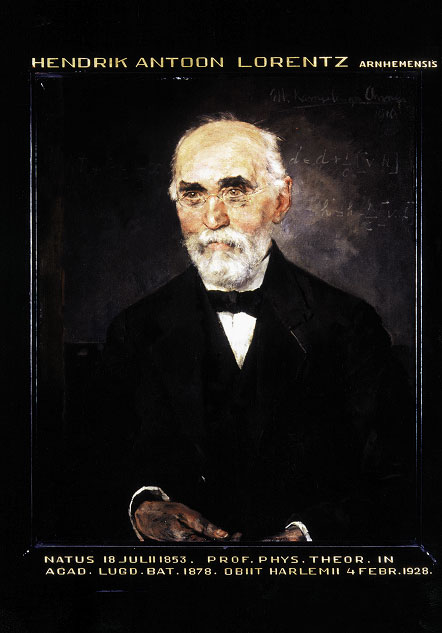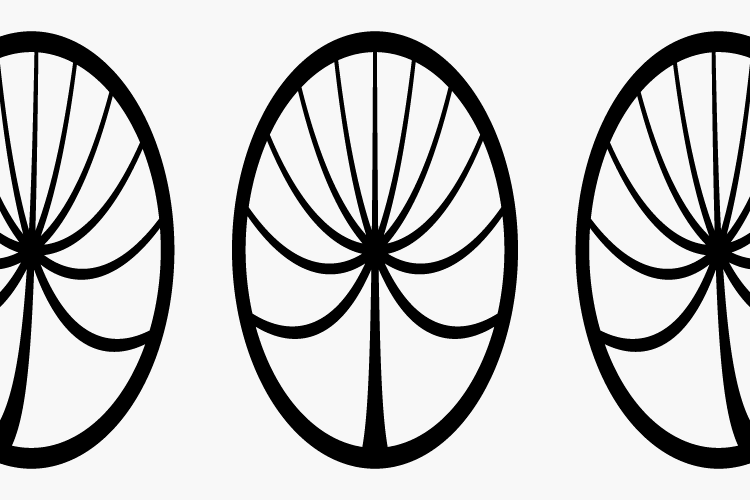|
Trouton–Noble Experiment
The Trouton–Noble experiment was an attempt to detect motion of the Earth through the luminiferous aether, and was conducted in 1901–1903 by Frederick Thomas Trouton and H. R. Noble. It was based on a suggestion by George FitzGerald that a charged parallel-plate capacitor moving through the aether should orient itself perpendicular to the motion. Like the earlier Michelson–Morley experiment, Trouton and Noble obtained a null result: no motion relative to the aether could be detected.F. T. Trouton and H. R. Noble, "The mechanical forces acting on a charged electric condenser moving through space," ''Phil. Trans. Royal Soc. A'' 202, 165–181 (1903). This null result was reproduced, with increasing sensitivity, by Rudolf Tomaschek (1925, 1926), Chase (1926, 1927) and Hayden in 1994. Such experimental results are now seen, consistent with special relativity, to reflect the validity of the principle of relativity and the absence of any absolute rest frame (or aether) ... [...More Info...] [...Related Items...] OR: [Wikipedia] [Google] [Baidu] |
Trouton–Noble Experiment
The Trouton–Noble experiment was an attempt to detect motion of the Earth through the luminiferous aether, and was conducted in 1901–1903 by Frederick Thomas Trouton and H. R. Noble. It was based on a suggestion by George FitzGerald that a charged parallel-plate capacitor moving through the aether should orient itself perpendicular to the motion. Like the earlier Michelson–Morley experiment, Trouton and Noble obtained a null result: no motion relative to the aether could be detected.F. T. Trouton and H. R. Noble, "The mechanical forces acting on a charged electric condenser moving through space," ''Phil. Trans. Royal Soc. A'' 202, 165–181 (1903). This null result was reproduced, with increasing sensitivity, by Rudolf Tomaschek (1925, 1926), Chase (1926, 1927) and Hayden in 1994. Such experimental results are now seen, consistent with special relativity, to reflect the validity of the principle of relativity and the absence of any absolute rest frame (or aether) ... [...More Info...] [...Related Items...] OR: [Wikipedia] [Google] [Baidu] |
Thought Experiment
A thought experiment is a hypothetical situation in which a hypothesis, theory, or principle is laid out for the purpose of thinking through its consequences. History The ancient Greek ''deiknymi'' (), or thought experiment, "was the most ancient pattern of mathematical proof", and existed before Euclidean mathematics, where the emphasis was on the conceptual, rather than on the experimental part of a thought-experiment. Johann Witt-Hansen established that Hans Christian Ørsted was the first to use the German term ' (lit. thought experiment) circa 1812. Ørsted was also the first to use the equivalent term ' in 1820. By 1883 Ernst Mach used the term ' in a different way, to denote exclusively the conduct of a experiment that would be subsequently performed as a by his students. Physical and mental experimentation could then be contrasted: Mach asked his students to provide him with explanations whenever the results from their subsequent, real, physical experiment differed ... [...More Info...] [...Related Items...] OR: [Wikipedia] [Google] [Baidu] |
Hendrik Lorentz
Hendrik Antoon Lorentz (; 18 July 1853 – 4 February 1928) was a Dutch physicist who shared the 1902 Nobel Prize in Physics with Pieter Zeeman for the discovery and theoretical explanation of the Zeeman effect. He also derived the Lorentz transformation underpinning Albert Einstein's special theory of relativity, as well as the Lorentz force, which describes the combined electric and magnetic forces acting on a charged particle in an electromagnetic field. Lorentz was also responsible for the Lorentz oscillator model, a classical model used to describe the anomalous dispersion observed in dielectric materials when the driving frequency of the electric field was near the resonant frequency, resulting in abnormal refractive indices. According to the biography published by the Nobel Foundation, "It may well be said that Lorentz was regarded by all theoretical physicists as the world's leading spirit, who completed what was left unfinished by his predecessors and prepared t ... [...More Info...] [...Related Items...] OR: [Wikipedia] [Google] [Baidu] |
Max Von Laue
Max Theodor Felix von Laue (; 9 October 1879 – 24 April 1960) was a German physicist who received the Nobel Prize in Physics in 1914 for his discovery of the diffraction of X-rays by crystals. In addition to his scientific endeavors with contributions in optics, crystallography, quantum theory, superconductivity, and the theory of relativity, Laue had a number of administrative positions which advanced and guided German scientific research and development during four decades. A strong objector to Nazism, he was instrumental in re-establishing and organizing German science after World War II. Biography Early years Laue was born in Pfaffendorf, now part of Koblenz, Germany, to Julius Laue and Minna Zerrenner. In 1898, after passing his ''Abitur'' in Strassburg, he began his compulsory year of military service, after which in 1899 he started to study mathematics, physics, and chemistry at the University of Strassburg, the University of Göttingen, and the Ludwig Maximilian Uni ... [...More Info...] [...Related Items...] OR: [Wikipedia] [Google] [Baidu] |
Length Contraction
Length contraction is the phenomenon that a moving object's length is measured to be shorter than its proper length, which is the length as measured in the object's own rest frame. It is also known as Lorentz contraction or Lorentz–FitzGerald contraction (after Hendrik Lorentz and George Francis FitzGerald) and is usually only noticeable at a substantial fraction of the speed of light. Length contraction is only in the direction in which the body is travelling. For standard objects, this effect is negligible at everyday speeds, and can be ignored for all regular purposes, only becoming significant as the object approaches the speed of light relative to the observer. History Length contraction was postulated by George FitzGerald (1889) and Hendrik Antoon Lorentz (1892) to explain the negative outcome of the Michelson–Morley experiment and to rescue the hypothesis of the stationary aether ( Lorentz–FitzGerald contraction hypothesis). Although both FitzGerald and Lorentz a ... [...More Info...] [...Related Items...] OR: [Wikipedia] [Google] [Baidu] |
Richard Chase Tolman
Richard Chace Tolman (March 4, 1881 – September 5, 1948) was an American Mathematical physics, mathematical physicist and physical chemist who made many contributions to statistical mechanics. He also made important contributions to Physical cosmology, theoretical cosmology in the years soon after Einstein's discovery of general relativity. He was a professor of physical chemistry and mathematical physics at the California Institute of Technology (Caltech). Biography Tolman was born in West Newton, Massachusetts and studied chemical engineering at the Massachusetts Institute of Technology, receiving his bachelor's degree in 1903 and PhD in 1910 under Arthur Amos Noyes, A. A. Noyes. He married Ruth Sherman Tolman in 1924. In 1912, he conceived of the concept of relativistic mass, writing that "the expression m_0 \left(1 - \frac \right)^ is best suited for the mass of a moving body." In a 1916 experiment with Thomas Dale Stewart, Tolman demonstrated that electricity ... [...More Info...] [...Related Items...] OR: [Wikipedia] [Google] [Baidu] |
Gilbert Newton Lewis
Gilbert Newton Lewis (October 23 or October 25, 1875 – March 23, 1946) was an American physical chemist and a Dean of the College of Chemistry at University of California, Berkeley. Lewis was best known for his discovery of the covalent bond and his concept of electron pairs; his Lewis dot structures and other contributions to valence bond theory have shaped modern theories of chemical bonding. Lewis successfully contributed to chemical thermodynamics, photochemistry, and isotope separation, and is also known for his concept of acids and bases. Lewis also researched on relativity and quantum physics, and in 1926 he coined the term "photon" for the smallest unit of radiant energy. G. N. Lewis was born in 1875 in Weymouth, Massachusetts. After receiving his PhD in chemistry from Harvard University and studying abroad in Germany and the Philippines, Lewis moved to California in 1912 to teach chemistry at the University of California, Berkeley, where he became the Dean of the Col ... [...More Info...] [...Related Items...] OR: [Wikipedia] [Google] [Baidu] |
Right Angle Lever Paradox
Rights are legal, social, or ethical principles of freedom or entitlement; that is, rights are the fundamental normative rules about what is allowed of people or owed to people according to some legal system, social convention, or ethical theory. Rights are of essential importance in such disciplines as law and ethics, especially theories of justice and deontology. Rights are fundamental to any civilization and the history of social conflicts is often bound up with attempts both to define and to redefine them. According to the ''Stanford Encyclopedia of Philosophy'', "rights structure the form of governments, the content of laws, and the shape of morality as it is currently perceived". Definitional issues One way to get an idea of the multiple understandings and senses of the term is to consider different ways it is used. Many diverse things are claimed as rights: There are likewise diverse possible ways to categorize rights, such as: There has been considerable debate abou ... [...More Info...] [...Related Items...] OR: [Wikipedia] [Google] [Baidu] |
Right-angle Lever Paradox (diagram)
In geometry and trigonometry, a right angle is an angle of exactly 90 degrees or radians corresponding to a quarter turn. If a ray is placed so that its endpoint is on a line and the adjacent angles are equal, then they are right angles. The term is a calque of Latin ''angulus rectus''; here ''rectus'' means "upright", referring to the vertical perpendicular to a horizontal base line. Closely related and important geometrical concepts are perpendicular lines, meaning lines that form right angles at their point of intersection, and orthogonality, which is the property of forming right angles, usually applied to vectors. The presence of a right angle in a triangle is the defining factor for right triangles, making the right angle basic to trigonometry. Etymology The meaning of ''right'' in ''right angle'' possibly refers to the Latin adjective ''rectus'' 'erect, straight, upright, perpendicular'. A Greek equivalent is ''orthos'' 'straight; perpendicular' (see orthogonality ... [...More Info...] [...Related Items...] OR: [Wikipedia] [Google] [Baidu] |
Solutions
*
{{disambiguation ...
Solution may refer to: * Solution (chemistry), a mixture where one substance is dissolved in another * Solution (equation), in mathematics ** Numerical solution, in numerical analysis, approximate solutions within specified error bounds * Solution, in problem solving * Solution, in solution selling Other uses * V-STOL Solution, an ultralight aircraft * Solution (band), a Dutch rock band ** ''Solution'' (Solution album), 1971 * Solution A.D., an American rock band * ''Solution'' (Cui Jian album), 1991 * ''Solutions'' (album), a 2019 album by K.Flay See also * The Solution (other) The Solution may refer to: * ''The Solution'' (Mannafest album), an album by indie rock band Mannafest * ''The Solution'' (Beanie Sigel album), an album by rapper Beanie Sigel * ''The Solution'' (Buckshot and 9th Wonder album), a collaboration albu ... [...More Info...] [...Related Items...] OR: [Wikipedia] [Google] [Baidu] |
Lorentz Invariance
In a relativistic theory of physics, a Lorentz scalar is an expression, formed from items of the theory, which evaluates to a scalar, invariant under any Lorentz transformation. A Lorentz scalar may be generated from e.g., the scalar product of vectors, or from contracting tensors of the theory. While the components of vectors and tensors are in general altered under Lorentz transformations, Lorentz scalars remain unchanged. A Lorentz scalar is not always immediately seen to be an invariant scalar in the mathematical sense, but the resulting scalar value is invariant under any basis transformation applied to the vector space, on which the considered theory is based. A simple Lorentz scalar in Minkowski spacetime is the ''spacetime distance'' ("length" of their difference) of two fixed events in spacetime. While the "position"-4-vectors of the events change between different inertial frames, their spacetime distance remains invariant under the corresponding Lorentz transformation. ... [...More Info...] [...Related Items...] OR: [Wikipedia] [Google] [Baidu] |






